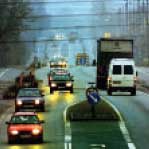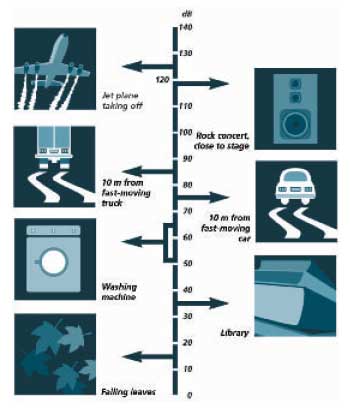|
| Front page | | Contents | | Previous | | Next |
Roads to Healthier Traffic
Traffic is noisy
Many Danes feel annoyed by noise from cars, trains and aeroplanes. Noise from road transport is the most important source of noise problems in Denmark. According to the Danish
government's strategy for reduction of road noise, about 700,000 Danish dwellings are exposed to some extent to noise from road traffic. Of these, about 150,000 dwellings are
exposed to severe noise, i.e. more than 65 dB. Studies show that noise levels of 50 dB and more may be very annoying to the people exposed. Traffic noise in a busy street reaches an
average of 65 dB. The figure on page 9 shows typical noise levels from a number of sources.
The Danish EPA has laid down guidelines for road traffic noise in different areas, for instance in residential areas, near schools, leisure areas and industrial areas. For new buildings the
guiding noise limit is 55 dB.

Photo: Scanpix
Traffic noise may be harmful to health
Research results indicate that noise may have a negative impact on human health. According to the World Health Organisation WHO, noise may
affect sleep, and this again affects health and wellbeing. Noise may increase the risk of cardio-vascular diseases. For persons exposed to continuous noise, measurements have been
made that show increased blood pressure and pulse, increased production of stress hormones and greater risk of a number of heart diseases.
Noise is perceived differently by different persons. However, many people feel that noise from traffic is annoying, and may therefore be stressed. When we are exposed to noise for long
periods, we may respond with anxiety, depression or become tense and aggressive.
Groups that are particularly noise- sensitive are children, blind persons, persons with impaired hearing, elderly persons, and all people who are ill or stressed. Studies also indicate that
permanent traffic noise may impair the ability of children to learn, mainly in primary school.

Source: Road Directorate
| Front page | | Contents | | Previous | | Next | | Top |
Version 1.0 June 2004, © Danish Environmental Protection Agency
|